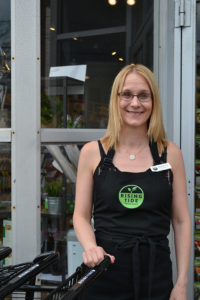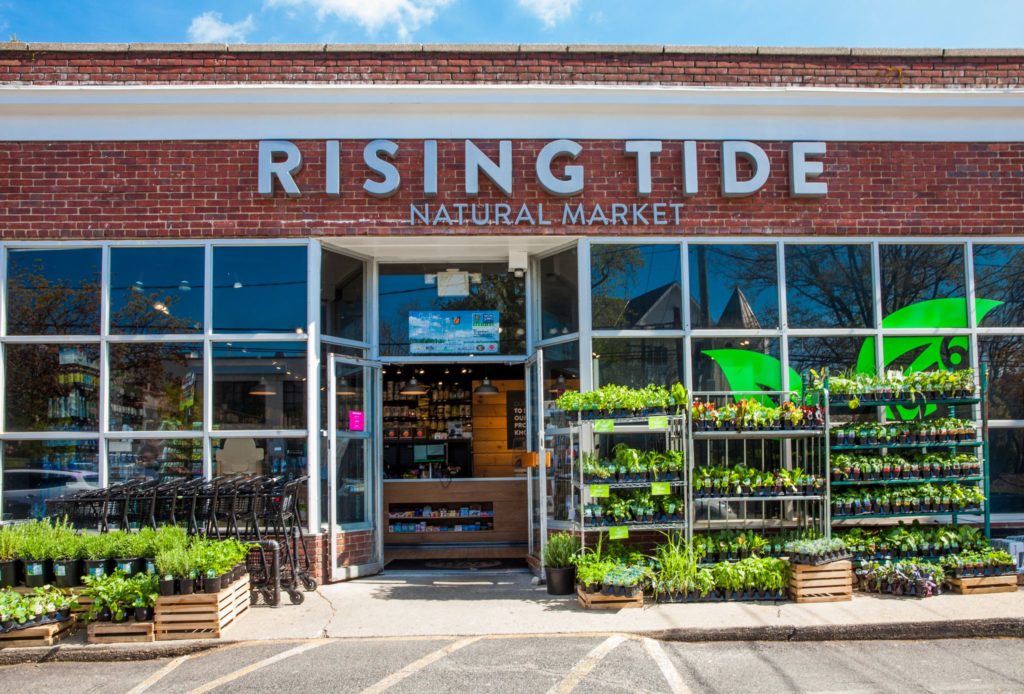The global pandemic has dramatically altered how grocery retailers approach all aspects of their business. As leaders have turned much of their focus to daily operations to ensure their stores are staffed, stocked, and safe, formalized processes for strategic planning have taken a back seat for many leaders. Now is not the time to proceed without a plan.
Columinate consultant Art Sherwood has built a career upon developing strategic processes and supporting business leaders. When store leaders would reach out to Sherwood for assistance, he would help develop multi-year plans, generally centered on taking the budget for the coming year and then flushing out a three- or five-year projection.
Historically, those strategic conversations and planning sessions would happen annually as part of a forecasting and budgeting season. It was somewhat predictable work. All of that shifted during the pandemic. Stores lost their ability to plan ahead. “COVID came in and slammed everybody into crisis mode,” says Sherwood. “It is like if you are driving a car and someone cuts you off, you immediately turn your eyes to that. Well, COVID was like a huge convoy of semi-trucks cutting us off, and it just kept coming and kept coming and kept coming.”
As we enter the third year of COVID, we connected with Sherwood and other retail grocery leaders to learn how their approach to strategic planning has changed and how they will address that process in the future.
- Jerry Farrell, Owner of Rising Tide Natural Market
- Ashley Pichon, General Manager at Rising Tide Natural Market
- Columinate Consultant
Being Strategic During Crisis: Create Structure
Rising Tide Market in Long Island, New York, has navigated ever-changing conditions of the pandemic, while also following a strategic plan. Founded in 1976 by Jerry Farrell, Rising Tide Market is a member of the Independent Natural Food Retailers Association (INFRA), a cooperative of more than 300 independent stores nationwide. Along with General Manager Ashley Pichon and other members of the management team, Farrell has been responsible for setting the strategic direction for the 3,000-square-foot store before and throughout the pandemic.
Pichon says they were very intentional about seeking out advice from their core management team throughout the planning process. “They really know us. They know our customers, and they know the staff really well,” says Pichon. “I think that has been key in navigating all of this. We had just begun getting to a place where we’re really trained on the financials—Jerry spent time bringing us all up to speed. We held department meetings at the end of every period to review our gross profits, our sales, and purchasing. We had this structure in place for about three to four months prior to COVID. When COVID hit we couldn’t sit down for one second, let alone sit and have a strategy meeting.”
Pichon adds that they were focused on surviving day in and day out. “Trying to stay open. Trying to stay healthy. Trying to protect staff. Trying to get buy-in from staff and get them to show up—because when everything shut down in New York, we were working with a third of our staff, doing three times the volume in sales that we were used to doing.”
Farrell says Rising Tide was able to start dedicating energy to strategic planning in December of 2020. “When things started to calm down in New York State, we sat down again to start to plan and really look at the past year. We wanted to see how our profits went down, plug the holes anywhere we could, and really start to think again about getting back into the groove of accountability in terms of the financials.”
Finding What Matters: Worker Safety and Community Connections
One common characteristic of stores that have been able to thrive in the face of adversity is a commitment to caring for the health and safety of workers. Sherwood says he doesn’t think a lot of people were thinking about the wellbeing of their employees as a primary strategic issue prior to the pandemic. “I think the opportunity to do that now is there.”
The desire to improve the lives of employees was a welcome driver of change at Rising Tide. “One of the things that came out of COVID for us was really understanding the importance of performance reviews and raises and all those things that get put on the back burner when you’re in retail. You’re running and you’re putting out fires and you’re not thinking strategically that way,” Pichon states. “We have absolutely reoriented that process at the store now, because we realized how important it is. We wouldn’t be here. We wouldn’t have gotten through what we got through as well as we did, had it not been for our staff.”
By focusing their attention on the safety of their workers, Farrell and Pichon were able to re-establish themselves as a preferred employer in their community.
“As much as you can, try to show appreciation for your staff,” says Farrell. “Respecting them and getting their feedback and instituting the changes that they want and being responsive to that matters.”
Having concrete deliverables that workers can count on improves performance and retention. “It really comes down to staff seeing not just growth in our respect, our esteem, but that they’re bringing home more, seeing that their efforts are appreciated,” says Pichon.
“That part of why we exist was always a component of the strategic conversation prior to COVID,” agrees Sherwood. “The wellbeing of our people matters, because if we don’t attend to that, it’s not only morally screwed up, it’s actually fundamentally going to be destructive to our businesses.”
Sherwood also believes a lot of stores got stronger during COVID for two reasons: “One, they got their fundamentals straightened out. If you didn’t have your standard operating procedures and how to order and how to take care of customers in place then you were in trouble. Second, it forced people to work together who had siloed out naturally. People had to be on the same team. They had to start talking to key staff leaders. You had to trust people.”
That collaboration and teamwork extends to the community of peers that formed early on in the pandemic. Pichon adds that their conversations with other INFRA stores played a central role in their success. “Before this pandemic really hit New York State it was hitting the West Coast, and there were INFRA members there who were almost exactly three weeks to the day ahead of us in dealing with this. It’s so important to have those peer relationships.”
A Way Forward: Accessible Planning
Sherwood has a plan for how we can take the lessons of the pandemic and use what we have learned going forward.
Historically, the strategic planning process has been costly for stores, but with the move to virtual consulting, it’s become more accessible for many stores. Prior to COVID-19, Sherwood says it would have cost organizations thousands of extra dollars just to get him to a store and put him up in a hotel.
“I’d come and work with them, and it would be great. I might have an extended connection with store leaders over time, but I wouldn’t have that extended connection with staff. It was always like, ‘Let’s take ourselves off-site, let’s talk about a strategic plan, and then after I’m gone. you can get back to the real work.’
I’ll leave them with some flip charts and some cool stuff and with everybody all excited, but after that, they would basically go back to the same thing, and maybe we’ve moved the needle a little bit. I believe that’s just not good enough. How do we make strategy part of the everyday?”
Sherwood is developing and piloting an online engagement platform that can be used to keep the strategic planning process at the forefront of retail operations. The platform will be comprised of three parts:
- Training and development: self-directed pre-training that is done before any strategic planning process so that everyone involved comes to the table prepared
- Guided video recordings that walk participants through the strategic planning process, from formulation to operationalization
- Development of “the plan,” followed by quarterly check-ins to hold co-op leaders accountable for three aspects of the strategic process:
- Development of SOPs (Standard Operating Procedures)
- Monitoring necessary changes to procedures
- Experimentation and innovation
The final piece for stores includes weekly or biweekly group coaching calls, which gives participants the ability to connect with others who are facing similar issues. This additional level of support will allow participants to leverage professional coaching from Sherwood as well as offer peer support.
“You get better work, and it actually costs you less,” says Sherwood. “You don’t have to gather people into one place. You’re getting better service and more empowerment and more capacity building and more everything for less cost.”
Interested in strategic planning assistance? Visit Art Sherwood’s consultant profile to learn more about his services.
Have more questions?
Get in touch with one of our consultants.




